Affiliate links on Android Authority may earn us a commission. Learn more.
Small talk: Is the iPhone SE a serious size option in 2016?
Published onMarch 21, 2016
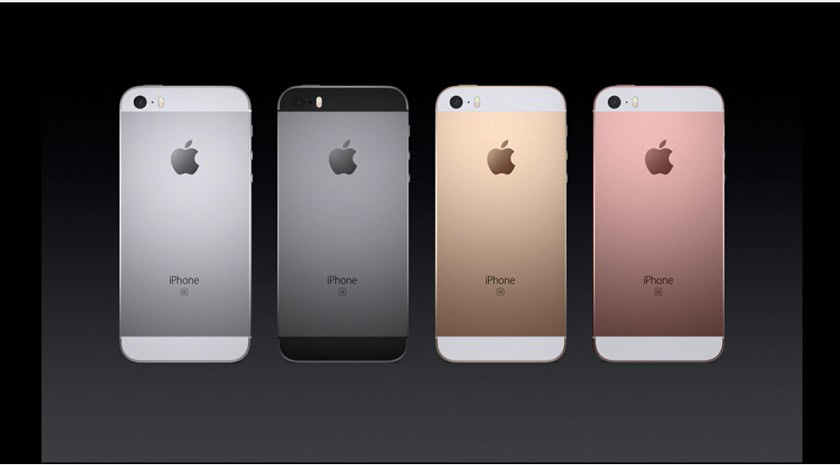
Earlier today, Apple announced its long-rumored small iPhone refresh, the iPhone SE. Practically speaking, it’s an iPhone 5S with the iPhone 6s’ key internals mixed in, as well as a few other small tweaks. The real appeal – depending on the person, of course – is that it has a relatively diminutive 4-inch display. In deciding to make such a product, Cupertino clearly believes there is a significant number of potential consumers who will indeed purchase such a proposition, even after the famous Fruit itself has decreed that bigger is better.
The problem of a lack of small smartphones can perhaps best be seen in considering a product like last year’s ZTE Axon Phone Mini: in 2015, a “Mini” phone has a 5.2-inch display. Chances are at for at least some members of the world’s population, that is not quite the definition of “mini” that readily comes to mind.
In a world where large screen phones are king, is there still a place in the market for smaller, yet essentially flagship spec’d, devices?
Small talk
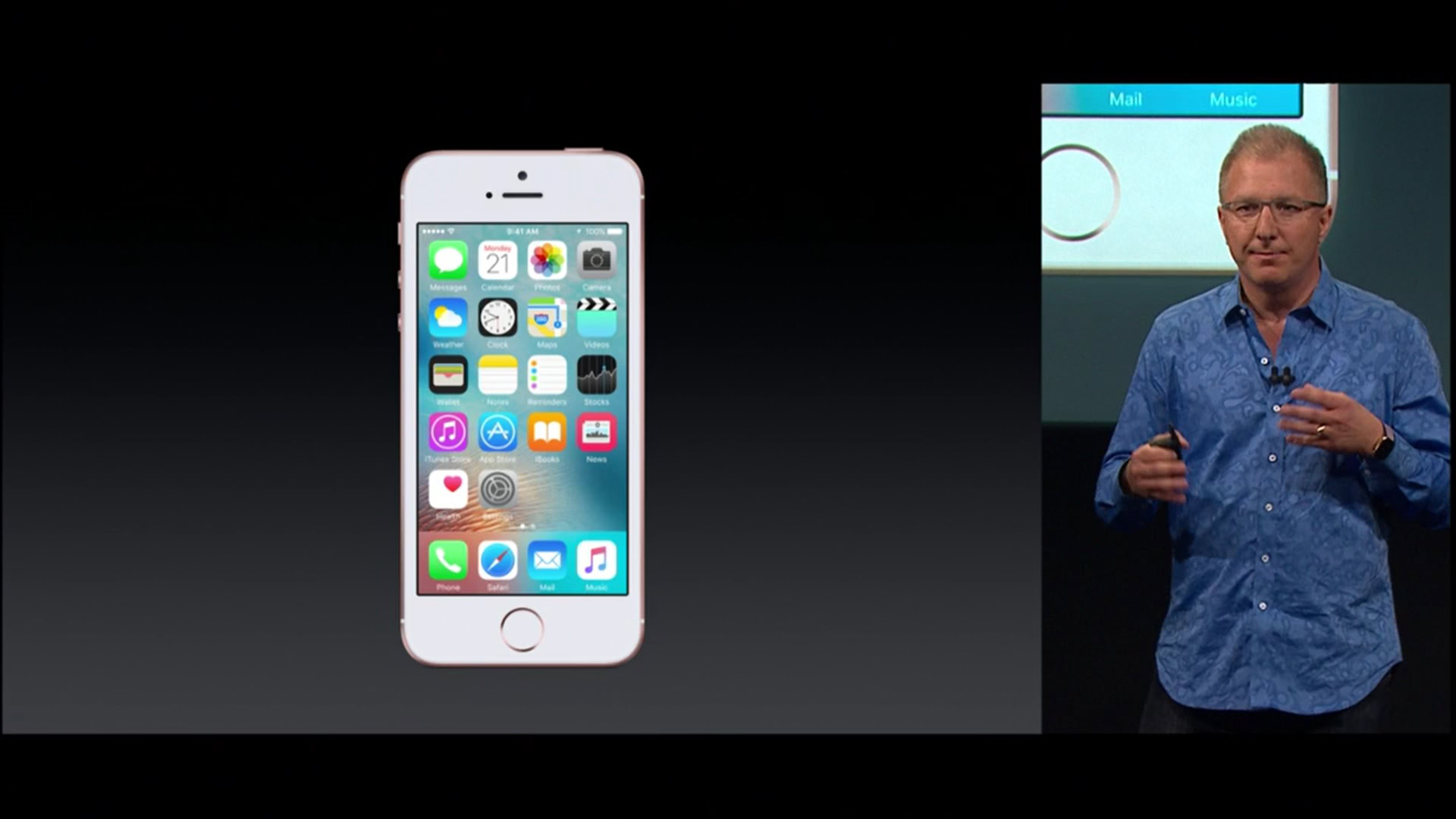
As someone obviously quite interested in mobile technology, I usually make it a point to check what devices the people around me are using. While I see a number of different devices out in the wild, I find it interesting just how many people here in Tokyo are still using an iPhone 5 or iPhone 5S. This, despite the fact that carriers go out of their way to facilitate updating, sometimes even offering an entry storage model iPhone 6S for no money down.
Why are these folks using these older models? You might think it has something to do with pricing, but the answer I almost always get is simple: “I don’t want a big phone.”
Chances are if you’ve asked the same kinds of questions to random people using the older iPhones, the answers would be similar. But don’t take my word for it: Tim Cook himself has even drawn emphasis on this issue. In an earnings call earlier this year, the Apple CEO went on record by stating that an estimated 60% of current iPhone users have not upgraded beyond an iPhone 5 or iPhone 5S:
We were blown away by the level of Android switchers that we had last quarter. It was the highest ever by far. And so we see that as a huge opportunity…The number of people who had an iPhone prior to the iPhone 6 and 6 Plus announcements — and so this was in September of 2014 that have not yet upgraded to a 6, 6 Plus or 6s or 6s Plus is now 60%. So, another way to think about that is 40% have, 60% have not.
And just to dispel any beliefs that the reason for this trend is due to a massive shift from iOS to Android, Carolina Milansei, chief of research at Kantar Worldpanel ComTech, commented that, “Apple loyalty in the U.S. is at its highest since 2012, reinforcing the fact that customer retention is not an issue.” Outside the USA however, Apple has been loosing market share:
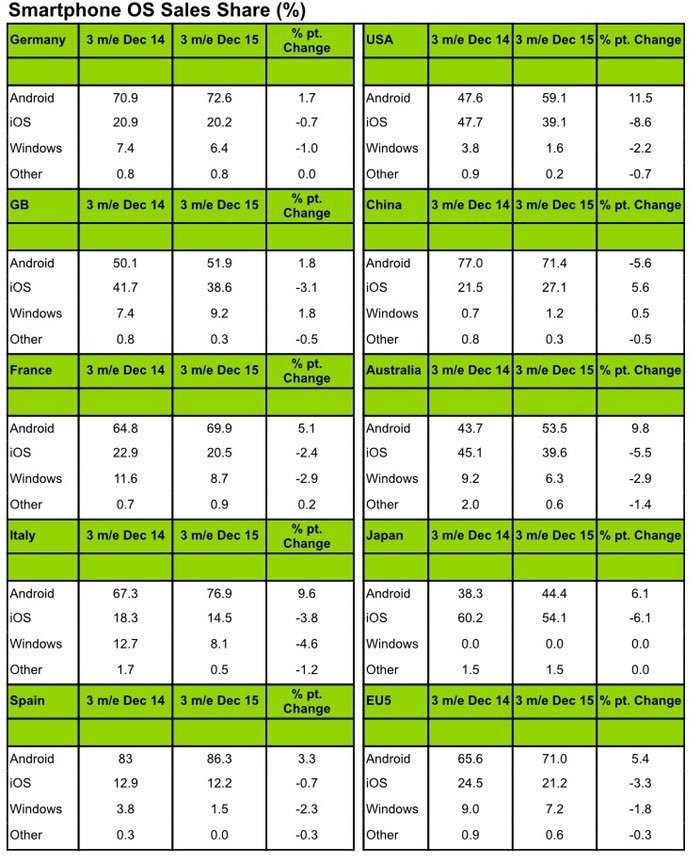
Logically speaking, it’s doubtful the international decrease in sales has much to do with screen size as will be explained in the following sections, however there could be a point made for the fact that if someone must consider a larger product on the whole, Android is more appealing than Apple. Going back to Mr. Cook’s comments however, it’s clear that a majority of older iPhone users are not necessarily thrilled with the size boost seen in the iPhone 6/6S and the iPhone 6 Plus/6S Plus.
Size Matters

Let’s consider for a minute that, when Zoolander came out in 2001, one of the movie’s in-jokes made reference to the fact that small was all the rage. The titular character’s mobile was so minuscule that it managed to achieve the intended effect: laughter. Nowadays however, it’s not just Derek who has entered a new Galaxy, but the general public as well. Phablet sales are booming, and in turn tablet sales are slipping. Even Apple itself can’t escape the decline, something that it no doubt hopes to stem with the launch of today’s new 9.7-inch iPad Pro.

Starting with the Dell Streak, and then debuting in earnest with Samsung’s original Galaxy Note, the industry has changed so much that it’s hard to ever believe the original Nexus One was praised for having a big screen at just 3.7 inches. Indeed the Nexus line itself went gigantic with the 6-inch Nexus 6 in 2014 and even last year’s Nexus 6P, though it was a tad smaller at 5.7-inches.
Perhaps the greatest tell-tale sign that big is beautiful is the history of Motorola’s Moto X and Moto G lines. These products started out in the sub 5-inch category – the original Moto X was actually praised for being so “small” – and yet lo and behold in 2015 they were relatively gigantic.
A lack of choice
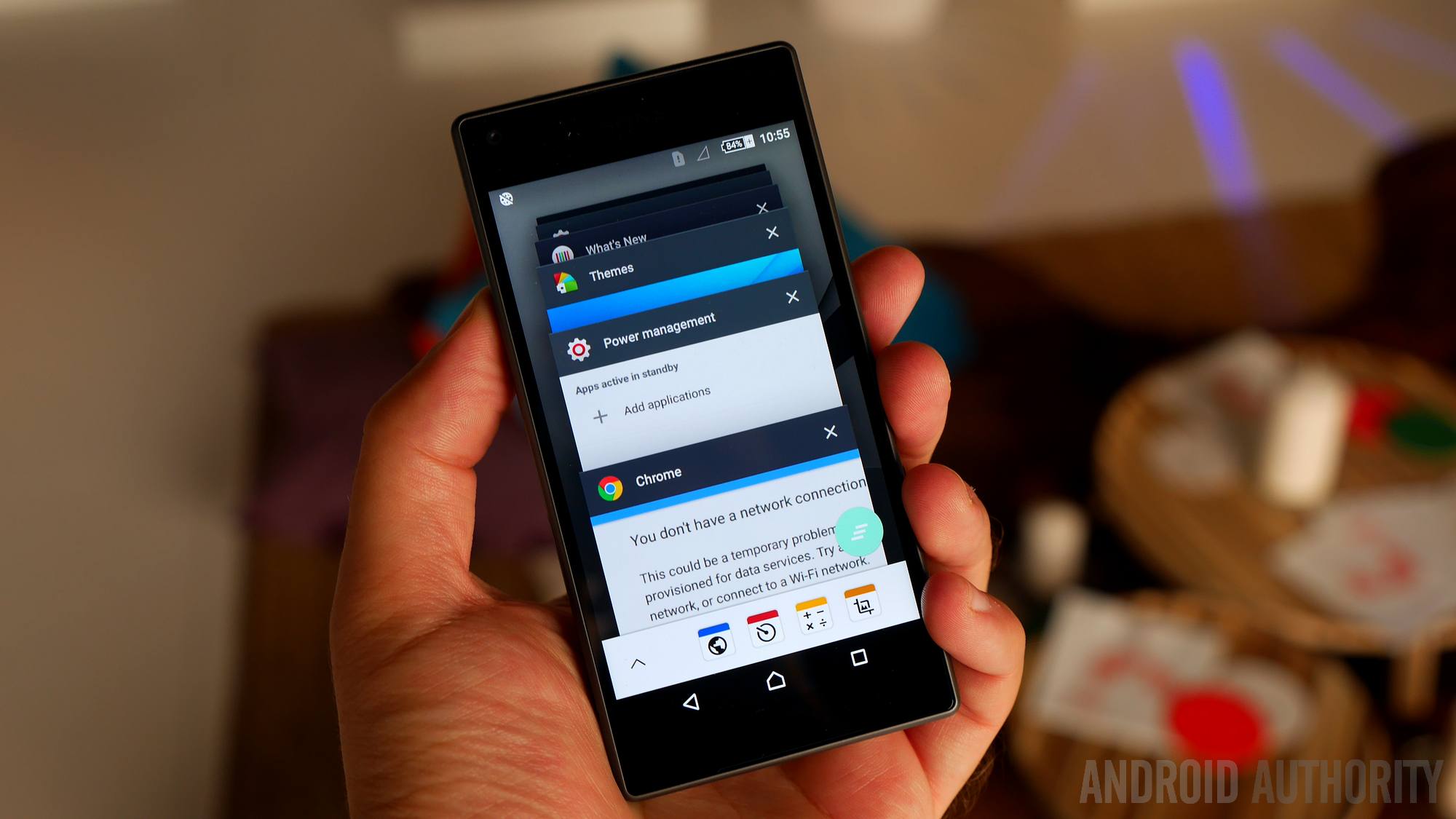
These days there are precious few big brand small phones to chose from. Samsung has a sparse number of low-end devices, though there is a high-end clamshell phone for customers in China and someone might still be able to find a Galaxy Alpha. Indeed of the major smartphone OEMs, Sony is perhaps the only one that has made a concerted effort to power-pack a petite package when it released its Xperia Z3 Compact in 2014, and last year, the Xperia Z5 Compact. There are even smaller phones out there – some around 4 inches – but are often from unfamiliar OEMs that come with their own set of caveats, including generally less than impressive specs.
Indeed what is left to choose from for all those in the world who do, in fact, want a small phone? Especially if they want a high spec offering from a major, trusted manufacturer?
Making a mini
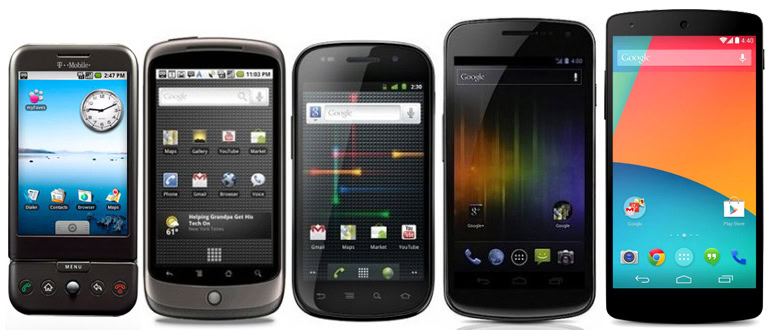
From a manufacturing standpoint, small phones present themselves with both a benefit and a challenge. Due to their size, it’s extremely difficult to fit cutting-edge components inside, along with a proper power call, and keep the package thin. The larger a phone is, the more spread out the internals can be and more room can accommodate a larger battery.
At the same time however, with respect to the display – always a major energy drainer – with a 4-inch phone there is absolutely no need to even go for Full HD let alone something like QHD. Indeed a “lowly” Standard HD (720p) panel would work perfectly. This means that OEMs could actually save money with respect to the display, and in turn save battery life, something that could then be diverted to the SoC and graphics.
Of course, there are a few important things to consider in counterpoint as to why the shrunken size may not be such a good idea:
- Web pages are more packed with content than ever before. Smaller screens makes it harder to see.
- Small screens are, on the whole, worse for one’s eye sight especially with prolonged staring.
- Games and many apps are best optimized for larger displays.
- The aforementioned problems of battery size and overall specs in a small package.
Obviously there are many other potential pitfalls, and some – or all – of them may not even be a valid concern for the individual user.
Will Apple start a new trend?
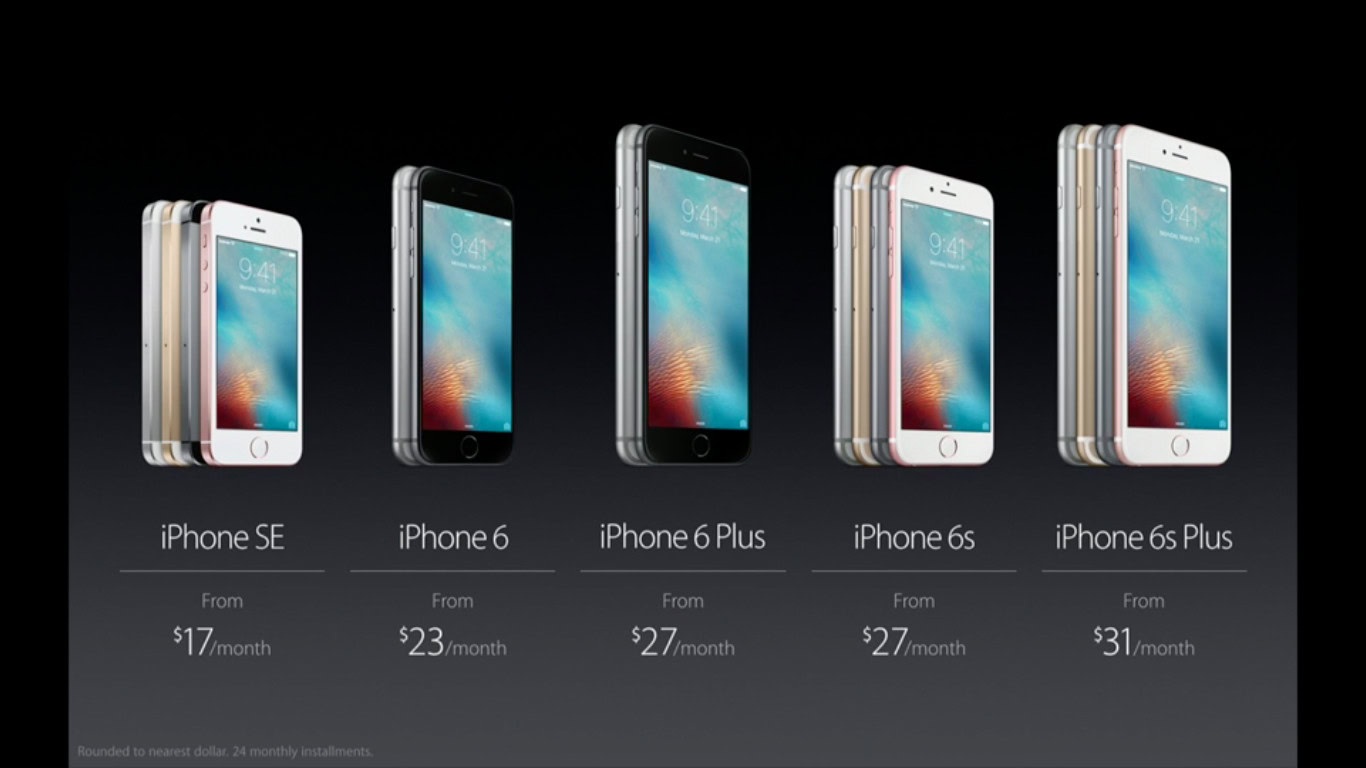
The question now, is how the market will respond to the iPhone SE. Based on Tim Cook’s estimations, Apple should see a gigantic increase in iPhone sales because there is such a large portion of its customer base who may finally feel compelled to upgrade. If this is the case – or perhaps even if it’s not – there will be undeniable evidence that people will buy smaller phones, even relatively expensive ones like an iPhone. This could itself lead to a new trend in the market, where suddenly OEMs start releasing a more diverse range of product sizes.
Even if there isn’t a major resurgence in the 4-inch product market, at the very least the release of an iPhone SE may in fact force OEMs to more contentiously consider making smaller products on the whole. I, for example, argued last year that Samsung is foolish for not releasing a Galaxy Note Mini: a 5-inch or smaller product that would bring the Note productivity suite and S-Pen stylus to potentially millions of potential customers who just feel 5.7-inches is too big for them.
Wrap Up
Personally, I think that while many people are happy with the current size situations of their smartphones, there is a very real part of the population that feels left out when they go to purchase a new phone. Maybe they don’t have large hands, maybe they don’t want a big phone, maybe they want something that can be easily pocketed, maybe they want something that has effortless one-handed use.
For these customers – and clearly there are a lot of them based on Apple’s math – there is really no choice whatsoever, despite the irony that there are over a thousand different smartphone OEMs in the world.
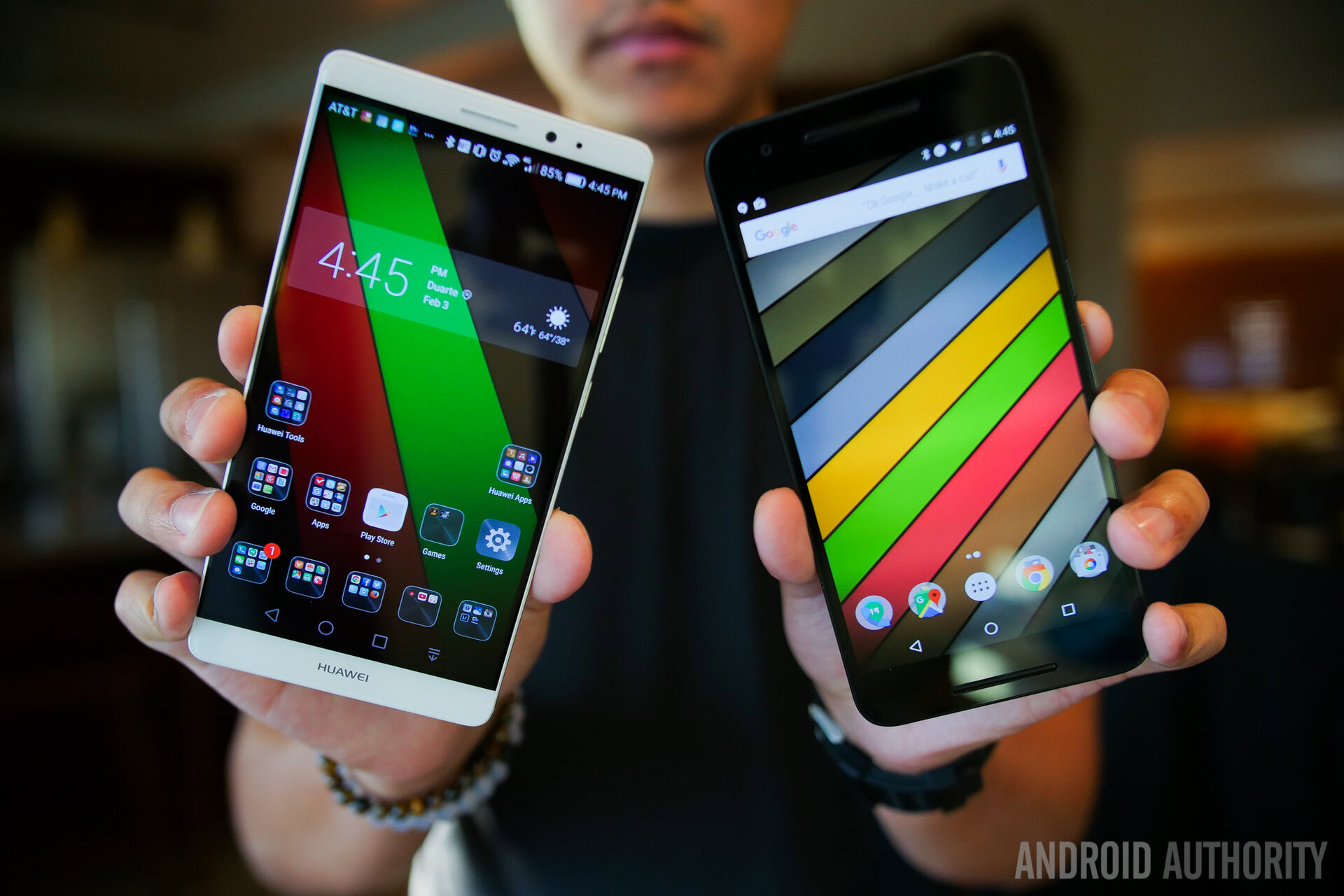
For these people, a small smartphone is something to savor. For these people, the iPhone SE – or perhaps an Android product like it – is exactly what they’ve been waiting for, perhaps for years no less. Maybe it’s time that more OEMs realize that one size doesn’t fit all, and that in order to get more customers, it’s prudent to bring some new size options to the table.
We at Android Authority would love to hear what your take is on the issue. Does a product like the iPhone SE stand a good chance at being a smash hit? Should OEMs start thinking more seriously about spectacular-speced small smartphones? Please feel free to take our survey and then leave your comments below!